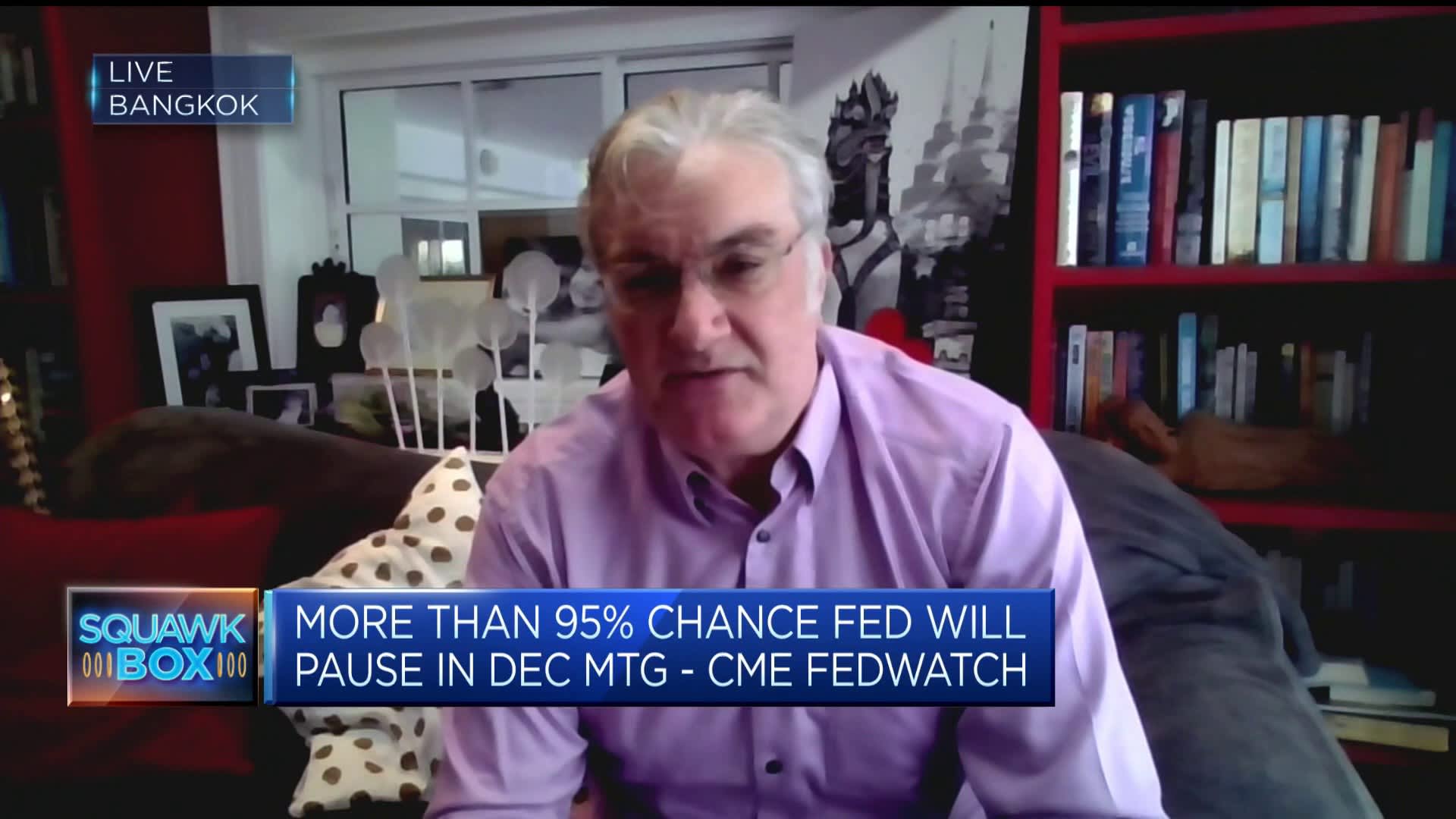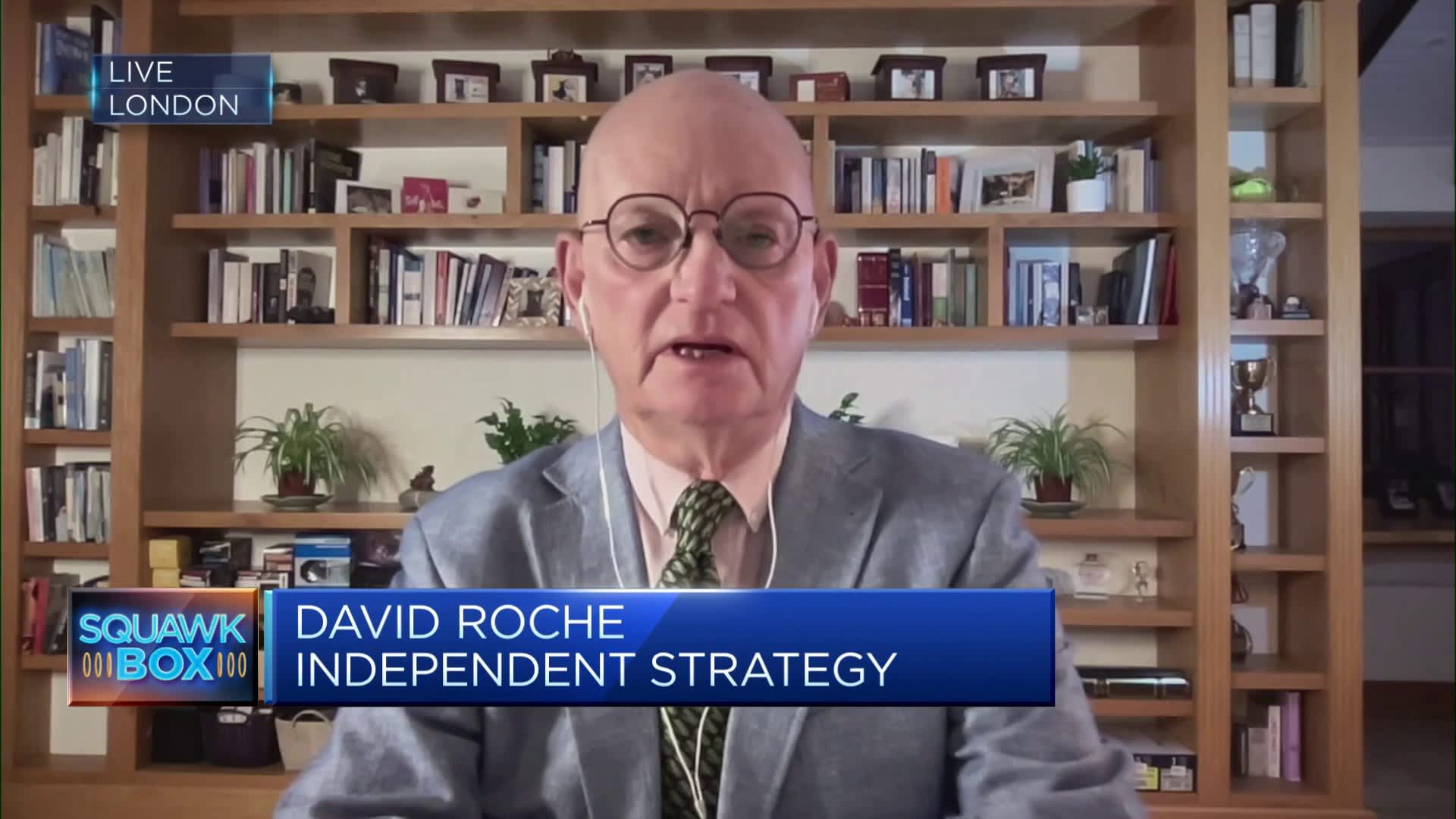Chris Wattie | Reuters
The Federal Reserve needs to cut interest rates at least five times next year to avoid tipping the U.S. economy into a recession, according to portfolio manager Paul Gambles.
Gambles, co-founder and managing partner at MBMG Group, told CNBC’s “Squawk Box Asia” the Fed was behind the curve on cutting rates, and in order to avoid an extreme and protracted monetary tightening cycle it will have to deliver at least five cuts in 2024 alone.
“I think Fed policy is now so disconnected from economic factors and from reality that you can’t make any assumptions about when the Fed is going to wake up and and start smelling the amount of damage that they’re actually causing to the economy,” Gambles warned.
The current U.S. policy rate stands at 5.25%-5.50%, the highest in 22 years. Traders are now pricing in a 25-basis-point cut as early as March 2024, according to the CME FedWatch Tool.

Federal Reserve Chairman Jerome Powell said on Friday that it was too early to declare victory over inflation, watering down market expectations for interest rate cuts next year.
“It would be premature to conclude with confidence that we have achieved a sufficiently restrictive stance, or to speculate on when policy might ease,” Powell said in prepared remarks.
Recent data from the U.S. has signaled easing price pressures, but Powell emphasized that policymakers plan on “keeping policy restrictive” until they are convinced that inflation is heading solidly back to the central bank’s target of 2%.
Financial markets, however, perceived his comments as dovish, sending Wall Street’s main indexes to new highs and Treasury yields sharply lower on Friday. The perception now being that the U.S. central bank is effectively done raising interest rates.
Is the inflation battle over?
U.S. consumer prices were unchanged in October from the previous month, lifting hopes that the Fed’s aggressive rate-hiking cycle was starting to bring down inflation.
The Labor Department’s consumer price index, which measures a broad basket of commonly used goods and services, climbed 3.2% in October from a year earlier but remained flat compared with the previous month.
Veteran investor David Roche told CNBC’s “Squawk Box Asia” that unless there were big external shocks to U.S. inflation in the form of energy or food, it was “almost certain” that the Fed was done raising rates, which also means the next rate move will be down.
“I will stick to 3%, which I think is already reflected in many asset prices. I don’t think we’re going to push inflation down to 2% anymore. It’s too embedded in the economy by all sorts of things,” said Roche, president and global strategist at Independent Strategy.

“Central banks don’t have to fight as fiercely as they did before. And therefore, the embedded rate of inflation will be higher than before it will be 3% instead of 2%,” said Roche, who correctly predicted the Asian crisis in 1997 and the 2008 global financial crisis.
It is now left to be seen what the Fed’s interest-rate plans are at its next and final meeting of the year on Dec. 13. Most market players expect the central bank to leave rates unchanged.

